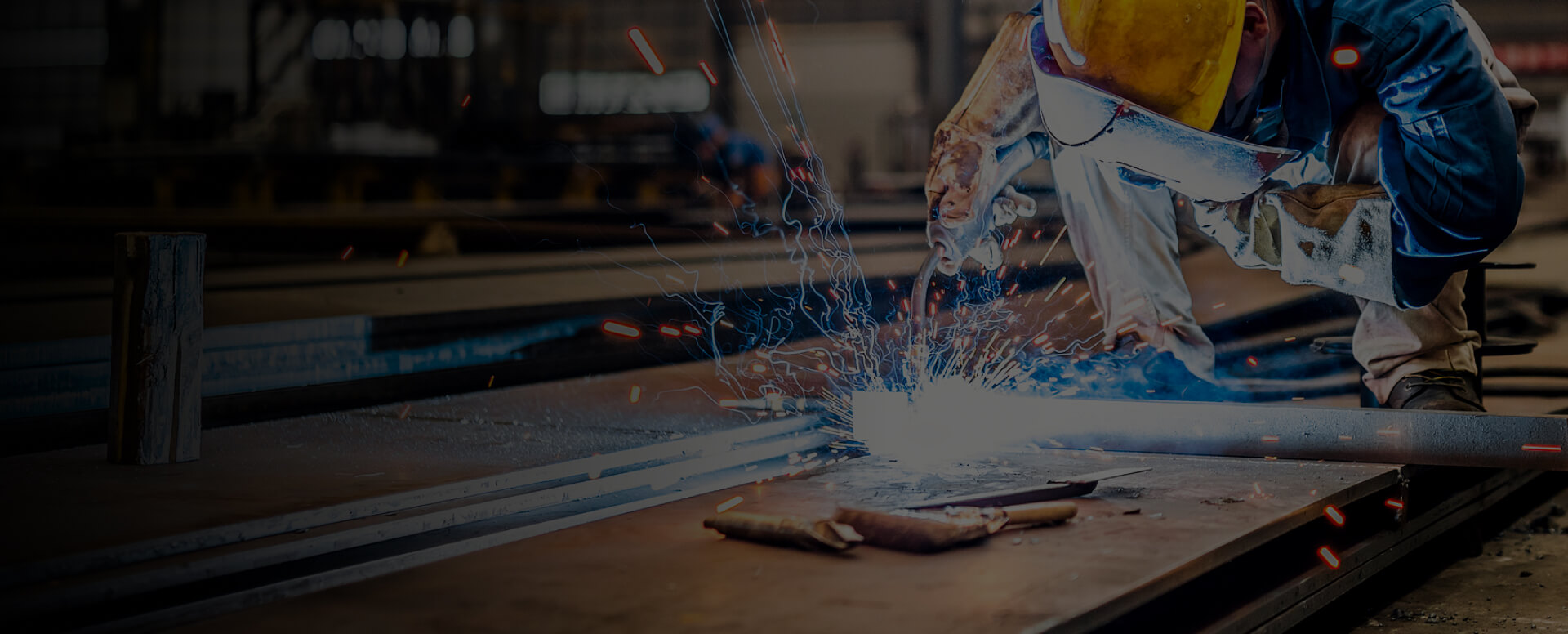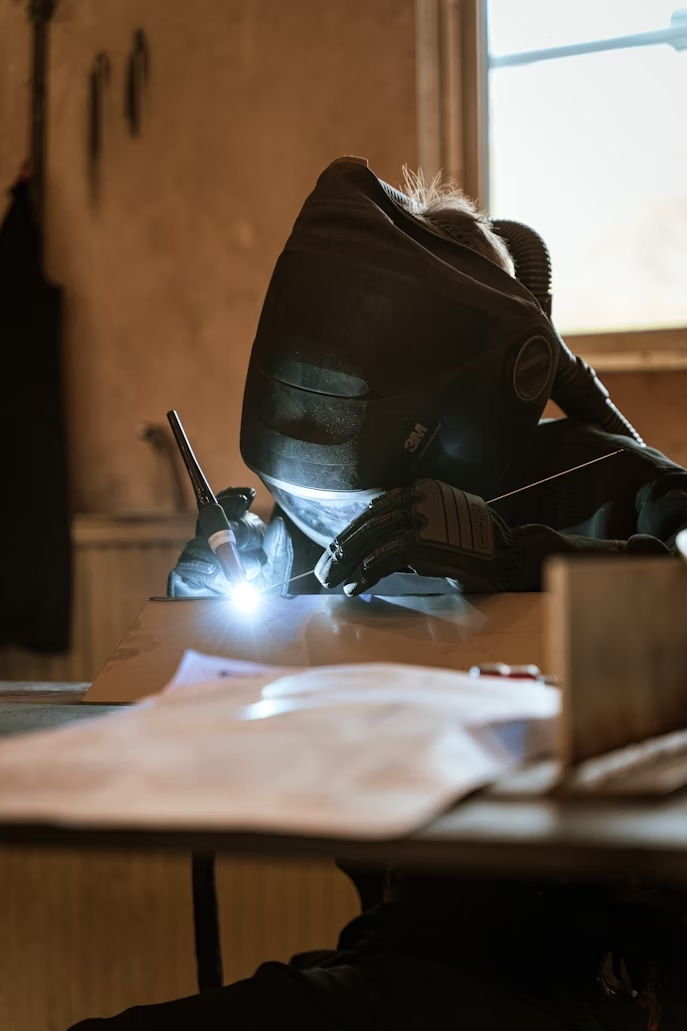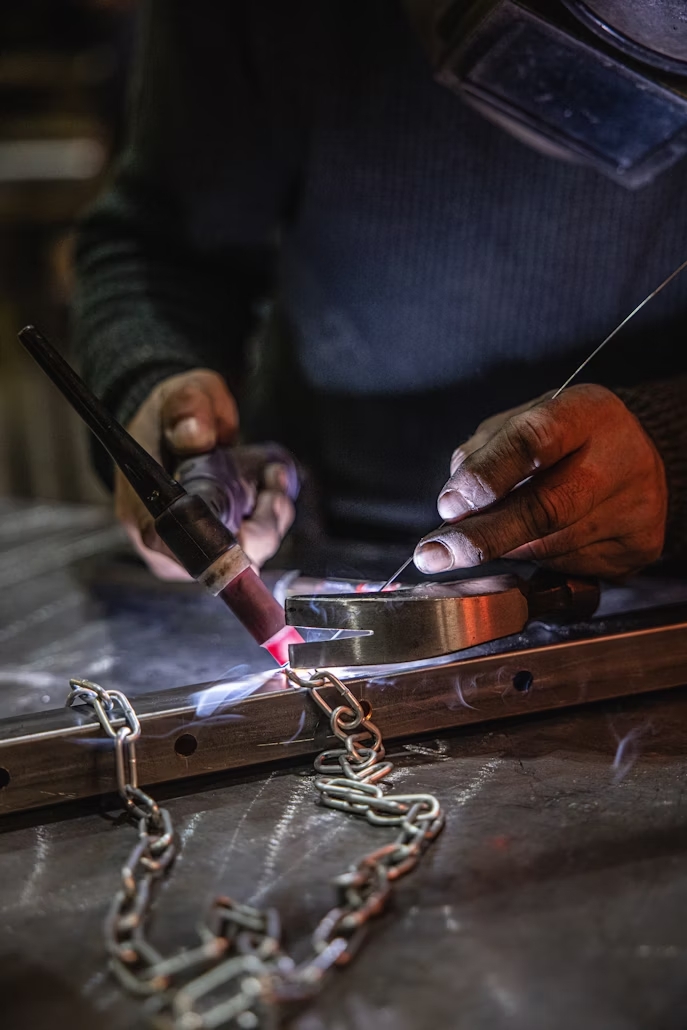
What is arc welding?
Arc welding is a process that uses an electric arc to join metals. The arc formed between the electrode and the metal workpiece generates intense heat, melting the materials and fusing them together. This method is highly versatile and can be performed using either direct current (DC) or alternating current (AC). There are many forms of arc welding, each with its own unique characteristics and applications—MAG welding is one such form, falling under the umbrella of gas metal arc welding (GMAW).
The Importance of Understanding Different Arc Welding Methods
For welding professionals and industries that rely on joining metals, familiarity with the various arc welding techniques is crucial. Each method has its own unique advantages, limitations, and ideal applications. For example, while TIG welding is known for its high-quality finish, it may not be suitable for thicker materials. Manual stick arc welding (SMAW), on the other hand, is well-suited for outdoor applications because it doesn't require an external shielding gas. A thorough understanding helps select the most efficient, safest, and most effective process for each project.
History and Development of MAG Welding
Origins of MAG Welding
MAG welding originates from the broader GMAW family. While standard GMAW uses inert gases such as argon or helium for shielding, the search for more economical alternatives led to the use of reactive gas mixtures—typically a mixture of argon and carbon dioxide (CO₂). These reactive gases are more affordable and readily available, making MAG welding a cost-effective alternative while also offering unique welding properties tailored to specific metals and applications.
Over time, as various industries recognized the advantages of MAG welding—particularly its adaptability to a wide range of materials and applications—its application expanded. Technological advances led to improvements in power sources, digital controls, preset programs, and refined gas mixtures. Research also helped reduce spatter, improve arc stability, and minimize distortion. Today, MAG welding is an integral part of industries ranging from automotive manufacturing to construction, highlighting its continued importance in metal fabrication.
Understanding MAG Welding
Basic Principles
Gas metal arc welding (MAG) involves creating an arc between a consumable wire and the workpiece. The heat generated melts the welding wire and base metal, forming a weld pool. An active shielding gas (typically a mixture of argon and carbon dioxide) protects the molten metal from contamination and affects arc stability, penetration, and weld bead appearance.
Components and Equipment
A typical MAG welding setup includes:
• Power supply: Provides a steady current (DC or AC).
• Wire feeder: Provides a continuous supply of welding wire.
• Welding gun: Conducts the current and directs the shielding gas.
• Gas cylinder: Provides active shielding gas.
• Regulator and flow meter: Controls gas pressure and flow.
• Ground clamp: Completes the electrical circuit.
Comparison with other arc welding methods
MAG welding vs. TIG welding
• Electrode: MAG uses consumable wire; TIG uses a non-consumable tungsten electrode.
• Shielding gas: MAG uses an active gas mixture; TIG uses an inert gas.
• Application: MAG welding is faster and more versatile, suitable for a wide range of thicknesses; TIG welding provides superior precision for thin materials and critical welds. • Skill Level: TIG welding requires more expertise due to the manual control required.
MAG Welding vs. MIG Welding
• Gas Type: MIG uses only inert gases; MAG uses a reactive gas mixture.
• Reactivity: The reactive gases in MAG can interact with the weld pool, altering weld properties.
• Cost: MAG is generally more economical due to lower gas costs.
Advantages and Disadvantages of MAG Welding
Advantages:
• Suitable for a wide range of metals and thicknesses
• High deposition rates and productivity
• Cost-effective gas selection, reducing operating costs
Disadvantages:
• Can be prone to spatter if improperly configured
• Performance depends heavily on the correct gas mixture and flow rate
• Less suitable for overhead or vertical welding than some methods
Applications of MAG Welding
MAG welding is widely used in the following industries:
• Automotive manufacturing: Suitable for high-speed production lines and body assembly.
• Shipbuilding: Providing deep penetration and high-strength welds for thick steel plates.
• Infrastructure: Used in bridges, steel structures, and large buildings. • Heavy Equipment: Essential welding materials for manufacturing machinery and industrial equipment.
• Oil & Gas: Suitable for high-strength pipes and components.
Use Cases and Benefits
• High-Speed Production: Automated MAG systems ensure consistent quality in mass production.
• Dissimilar Metal Joining: Choosing the right wire and gas combination can yield significant results.
• Repair & Maintenance: More tolerant of even slightly contaminated surfaces than other processes.
Key Benefits:
• High efficiency and reduced downtime thanks to continuous wire feed
• Adjustable parameters for various applications
• Economical operation with potential for automation
Related Articles

TIG Vs MIG Welding for Steel: Which Is Better?
When welding steel, TIG welding is often the preferred method for achieving high precision, clean welds, and controlled heat input. MIG welding, on the other hand, offers greater speed and is better suited for thicker materials or long continuous welds. For thin steel and high-integrity applications

The High Costs And Key Limitations of Robotic Welding
The High Cost and Key Limitations of Robotic WeldingWhile robotic welding enhances efficiency and precision, it comes with significant expenses, requires specialized setup, and lacks human-like adaptability for complex or non-standard tasks.High Initial InvestmentAdopting robotic welding systems inv

Is TIG Welding Suitable for Thick Metals?
Yes, TIG welding is suitable for thick metal—delivering high-quality, precise, and versatile results across a wide range of metals. However, it demands greater skill, is generally slower, and can be more expensive than alternatives like MIG or flux-cored welding.TIG Welding and Metal ThicknessUnders

How TIG Creates Leak-Proof Joints?
Is TIG Welding Waterproof? How TIG Creates Leak-Proof Joints?Yes, TIG welds are considered waterproof when executed correctly. The TIG welding process (Gas Tungsten Arc Welding - GTAW) produces high-quality, precise welds characterized by minimal porosity and excellent fusion. This results in welds

